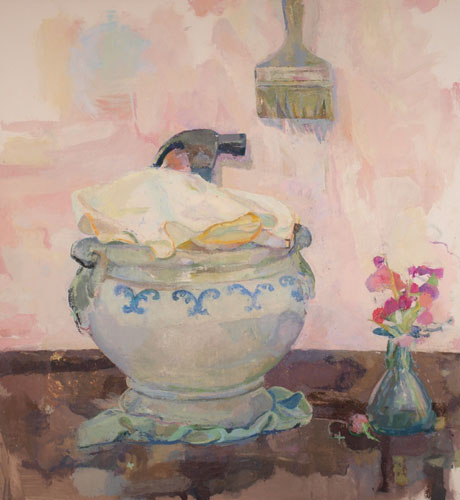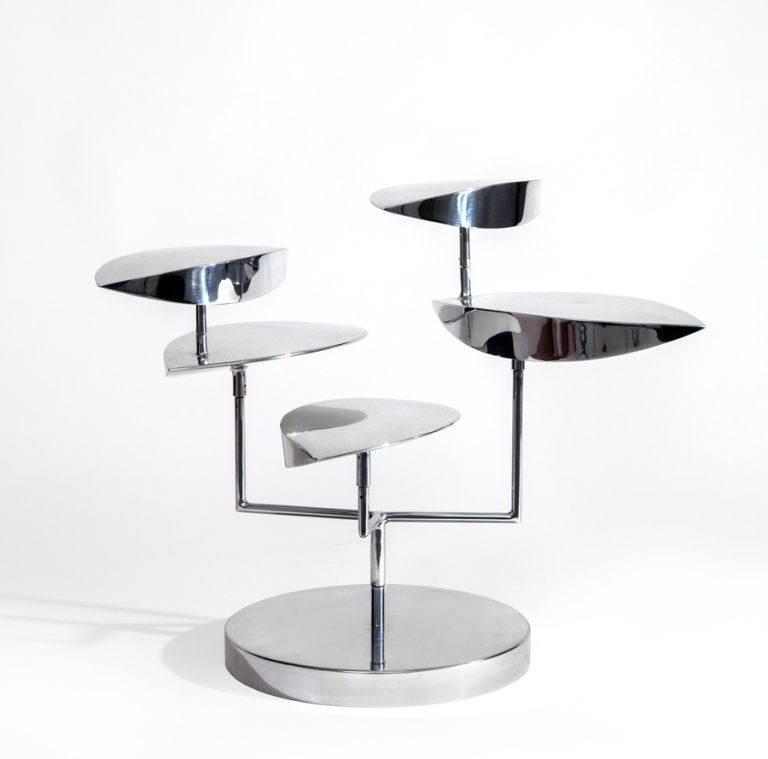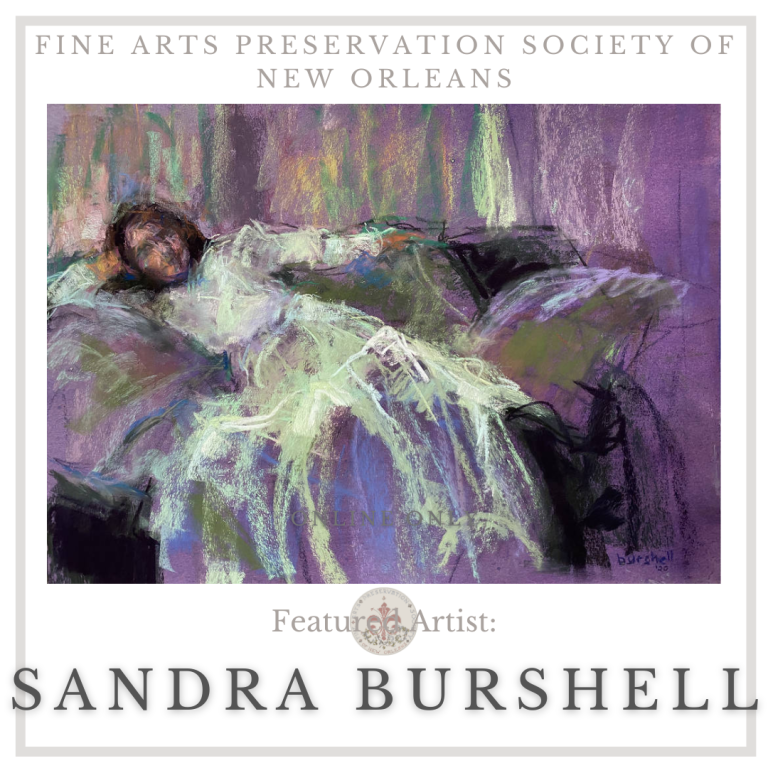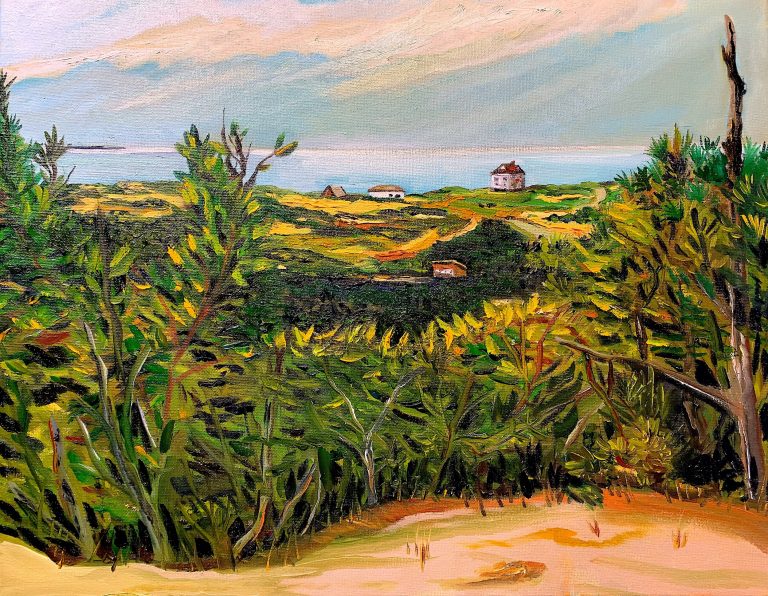
*This article was originally published as the exhibition essay for Xico Greenwald’s solo exhibit at Loyola University during 2019-2020. Special thanks to Benjamin Benus, Associate Professor of Art and Design History, Xico Greenwald, and the Loyola University New Orleans Department of Art.
A link to the Exhibition Catalogue PDF:
A Means of Union
by Saskia Ozols Eubanks, Exhibition Curator, Director, Collins C. Diboll Art Gallery
In What is Art, Leo Tolstoy states that “Art is not the manifestation of some mysterious idea of beauty or God; it is not a game in which man lets off his excess of stored-up energy; it is not the expression of man’s emotions by external signs; it is not the production of pleasing objects; and, above all, it is not pleasure; but it is a means of union among men, and indispensable for life and progress toward the well-being of humanity.”1
Considering art as a means of union among men and indispensable for life, we enter into the current exhibition of work by Xico Greenwald, Paintings: On the Table. This series of 14 paintings demonstrates, as Tolstoy suggests art should, a means of union. Beyond conceptualizing a painting as a means of union, as a vital part of the viewer’s experience as it intersects with an artist’s record of his experience2, Greenwald’s paintings in some way present a visual dialogue between Praxis/Poesis3 and selectively quote from the tradition of observation-based realism4 and its pedagogy. The visual combination of these ideas invite contemplation on the role painting plays in a current context informed by history, philosophy, and technique.
Considering Tolstoy’s comment on the role of art as it connects with this series, a new way to identify painting as a process adaptive to the artist and his relationship to the period in which he lives becomes clear. The assertion that “Painting is dead,”5 feels ill-informed. Art, perhaps even painting, according to Tolstoy is “Indispensable to life.” His thoughts on art as an act of union may be considered with this body of work through the experience, observation, and vision utilized in each painting. This series of work demonstrates that painting is alive and well and still has something new to bring to the table.
Despite almost a century of arguments regarding the death of painting, a re-investigation of its potential is happening now. Among others, two major institutions recently explored the problem: The Museum of Modern Art in New York, with its Forever Now: Contemporary Painting in an Atemporal World from 2015; and The Tate Britain in London with its 2018 exhibition All Too Human: Bacon, Freud, and a Century of Painting from Life. Together these exhibitions demonstrated an attention to painting from working artists of the last century as well as art communities, organizations, institutions and individual artists.
Loyola University is pleased to present this solo exhibition of paintings by Xico Greenwald and highlight an individual artist working diligently in a visual language that deserves both preservation as well as continued exploration of its contemporary evolution. Based in New York, Xico Greenwald paints from direct observation of his subjects. This process places him in the realist painting tradition and offers a number of avenues of exploration in both technique and concept. One of these is the overlap of the manner in which we understand realism with Aristotle’s thoughts on Poesis. A potential contradiction between Realism6, as an end unto itself, and the environment of Praxis/Poesis, is that their combination results in a process of creation that allows multiple moments of observation and experience to exist simultaneously.
If one considers this idea in connection with Picasso, or with Duchamp, a figure moving down a staircase emerges in multiple positions7. The many overlapping poses of the model disrupt the reality of each pose. The experience of observation by Duchamp of his moving model is recorded in a non-realistic way. In considering representation and realism in connection with this idea we enter into a new understanding of the role the artist’s experience plays in observation-based realism.
Greenwald’s work includes his own observations and experience of looking at his subject throughout a series of multiple moments; yet their combination helps to signify their perceived reality. All painters who work from direct observation maintain these moments as essential to the identities of their subjects. Although each artist may work in a different time and/or place, the function of observation-based experiential painting assists in identifying individual point of view and maintaining diversity within imagery8.
In addition to a strong level of comfort in recording his own point of view through visual means, Greenwald’s work transcends problems associated with certain types of contemporary representation9. His paintings are not in competition with the aesthetic of photography, the paintings go beyond the decorative10, and are not kitschy11 or overly nostalgic. The work is fresh, new, and contemporary. His manipulations of observation and the presentation of final paintings include moments of experience from each stage of work that do not conflict with their representation as real. There is no disruption to the “reality” of Greenwald’s work, only emphasis on it.
In his 1974 essay, Abstract, Representational, and so Forth, the critic Clement Greenberg12 wrote the following: “Not only does the abstract picture seem to offer a narrower, more physical, and less imaginative kind of experience than the illusionistic picture, but it also appears to do so without nouns or transitive verbs, as it were, of the language of painting.” This can be translated in a number of ways, yet presently, among contemporary artists working from direct observation, and specifically in this exhibition, one may find that the artist’s experience and subjective point of view influence the language of painting significantly.
Greenwald’s manner and means of representation13 provide pathways to the problem Tolstoy discusses regarding art and the beautiful. Through the careful arrangement and juxtaposition of strength and delicacy, Greenwald’s brushwork encounters beauty with grotesque applications of marks and paint. The identities of his objects appear to be in tension with the manner and means in which he’s represented them. The form of painting Greenwald engages is inevitably shaped by the point in time, individual experience, and perspective of today. This form functions as a valuable tool for deciphering the cultural, social, and political climate in which we live. Artists that are at once connected with Greenwald’s manner and precede his visual dialect include Morandi, Diebenkorn, Hopper, even Hockney, and Matisse. Greenwald’s intersections with these artists occur in transitional periods betweenrepresentation and abstraction that allow fluency with formal elements as well as individual creative departure.
Painting is not only alive and well, it may even occupy an important place during a time when culture is under threat from a change in priorities regarding education policy, arts funding, and political tastes informed by a growing population lacking the benefit of exposure to the arts. Tolstoy’s words still ring true today, and with Greenwald’s current exhibition, we enter a world where painting exists comfortably in contemporary art despite all counterinfluences; informed not only by the history of art and aesthetics, but by the artist’s own experience of recording what he observes.
In his work, Bowl, Clothespins a small, intimate still life of simple objects leaps out of its genre through a larger-than-life portrayal, with larger-than-life-sized brushstrokes and mark making. The manner evokes technique utilized by the west coast Bay Area figurative painters, and at once expresses a chalky and dry, crisp light. At the same time, it introduces a cool emptiness
that could be a figureless, Hopper-esque interior. Subtle contrasts of color temperature interact within cool tones as brushwork interplays with warm, dark pencil markings.
Horizontal Still Life, utilizes an extreme compositional device traditionally reserved for implications of finality. Here, Greenwald takes this convention, but organizes his composition with a series of high tints and tones in warm chromatic display. A brilliant horizontal pink ribbon sets the stage for a bowl, brown nuts and a sea shell shape on the far right. The combination of earthy dark shapes with the light of the sea offers a beautifully balanced color composition. This painting is reminiscent of explorations by a mid-career Matisse, investigating the space between representation and painterly abstraction, while emphasizing direct observation.
In Black Jug, Asparagus, compositional rhythm throughout interstices ignite the movement of the viewer’s eye as it travels the picture plane. This work recalls the Italian mid-century still life paintings of Morandi through the meter of space and a reserved use of color. In Vase I, and Vase II, as well as Skull I, and Skull II, we see the artist’s process and search as he allows us into his journey by sharing two variations on a theme. Vase I and II are straightforward still lives of vases with similar placement within the composition, yet there are slight changes from one to the other. A vase is moved by the smallest increment, the addition or subtraction of an object. One might wonder: Why bother doing two variations of the same painting? The answer to this question is part of what demonstrates Greenwald’s dedication to his expression.
In Skull I, and Skull II, Greenwald explores a contemporary and unique variation on the traditional Vanitas. Meant to invite meditation on mortality and change, the vanitas usually includes a skull and series of objects on a dark background with high if not extreme contrasts in value. Skull I presents a skull arranged atop an issue of The New York Times, painted in Greenwald’s trademark high key palette. This is an interesting translation of the traditional much darker depictions, yet maintains the expressive quality intended by this historical genre. Skull II allows us another look into a variation on the same composition though it incorporates different colors in the same palette. We can see many studies for finished works done by artists of the past, yet here the choice to include variations as finished paintings is one that allows the viewer to enter the artist’s process. With this, we are experiencing both the process and the product in an unusual way that presents Praxis and Poesis with the same degree of importance.
In the works Vase I and Vase II, we see two similar compositions of objects. The movement between these compositions allows us into the artist’s journey and helps us understand that the act of painting often incorporates process, transition, and movement—often to find a finished or satisfying form the painter continues with variations on a theme until he/she arrives. It is in this delicate balance between process and product that we understand the idea of poesis in this exhibit.
In Strawberries, vibrant red forms become sculptural and burst out into three dimensions as a soft wrapping of white linen envelopes them. The red is further picked up in the weaving of a basket, masterfully painted with simplified strokes contrasting texture, value, and color temperature. This portrait of decadent beauty and fruit of summer maintains a gritty raw counterpoint that removes the picture from the realm of decorative. Pencil lines are scratched into surface and the texture of the paint allows each subsequent layer of color a living space. Each space, each layer of paint visible in alternating moments almost as if peering through finely woven lace. In Black Jug, Walnuts, Shells and Copper Pot, Box, complementary color relationships direct the compositions. The language of color theory speaks strongly here, providing structure to loosely painted forms in both works. Still Life with Seashells vibrates with intensity as shell shapes respond to the gravity of the floor and dynamic manipulation of the viewer’s eye. The order of the geometry of nature is felt in the shells and echoed throughout the composition.
In Bowl, Laurel, and Tureen, Hammer, Brush, two still lifes, objects are handled with the importance and scale of the human figure. These large-scale, monumental works tower over the remainder of the exhibition—also over life-sized paintings, yet, these two works stand alone in certain ways. Juxtaposing delicacy with extreme attacks of mark making, these paintings portray delicate objects that are formed with indelicate marks. Although the marks clearly draw on a developed sensitivity in looking and describing, they almost threaten the fragility of the objects themselves. This converse relationship is taken further in Tureen, Hammer, Brush, through the addition of a hammer—an object of destruction (or construction) — which is depicted in direct line with a piece of delicate porcelain. Contrasting textures of objects and layering of paint is textures of objects and layering of paint is reminiscent of early Freud yet it is also in line with the distinctive manner Greenwald employs in each of the other works in this exhibit.
This body of work addresses process, paint, and poesis as integral to the dialectic between the painter, the viewer, and the picture. As Lacan states in Four Fundamental Concepts of Psychoanalysis: “The function of the picture—in relation to the person to whom the painter, literally, offers his picture to be seen—has a relation with the gaze… he gives something for the eye to feed on, but he invites the person to whom the picture is presented to lay down his gaze as one lays down his weapons.“ The relationship that Lacan describes invites thoughts on what art is, why we enjoy it, and how it has evolved in contemporary culture. In light of Tolstoy’s assertion that art is “Indispensable for life, and progress toward the well-being of humanity,” the greatest success of this exhibition exists in our interaction with it.
——————————————————————————————————————–
1 What is Art, first published in 1897, explores different approaches to deciphering works of art in all media and their relevance in society.
2 Rolande Barthe writes about this idea in Camera Lucida, and Death of the Author. In the article: Subject/Object Relation, by Henry E. Bliss, published in the The Philosophical Review, vol. 26, no. 4, 1917 the author discusses this relationship extensively.
3 Praxis and Poesis are terms relating to the interpretation of the act of making something and its relationship with the product that is made. Aristotle discusses this in his Nicomachean Ethics, and De Poetica.
4 Observation-based realism is a type of representational painting. To work “from direct observation” is to set up your work directly in front of your subject and interpret what you see. This differs from photorealism and other forms of photography-based representation in that the perspective and aesthetic are based on the way the
human eye perceives space. This is a very different aesthetic than one employed through the copying of
photographs, as atmospheric and linear perspective are distorted by the camera’s monocular vision.
- 5 Paul Delaroche first declared the death of painting in 1893. Since then many critics have re-investigated the thought regularly. Kenneth Clark, in his 1935 essay The Future of Painting, is a good example. Martin Hammer’s article in the Tate Papers provides a nice commentary. See also Roberta Smith’s 2010 article Its Not Dry Yet fora nice summary of contemporary thought on the death of painting.
- 6 Realism in Painting depicts objects as they are perceived by the artist. It is considered the opposite of Classicismand the many re-investigations of Neo-Classicism by artists which depict a non-existent ideal. Realism includesunlovely moments of reality edited out by other forms of representation.
7 Marcel Duchamp painted and exhibited Nude Descending a Staircase (Collection of the Philadelphia Museum of
Art) amidst much controversy in 1912. This is a pivotal work for many reasons and in connection with Realism we look to it for the use of movement study inspired by Muybridge whose work informed film as we know it today. Muybridge worked closely with one of the first and most well know American Realist painters, Thomas Eakins of Philadelphia. Eakins’ body of work includes much study and documentation on correcting the skewed perspective of the camera with proper linear perspective.
8 The process of painting from direct observation allows diverse points of view through the varied locations, experiences, and thoughts influencing the perspective of each artist. If a group of artists encircle a simple form on a model stand each artist will provide a different representation of the same object. Each point of view will
not only contain a separate set of circumstances related to the individual vanishing point and horizon line of each artist, but also will be influenced by each artist’s experience. This process produces a situation that encourages discourse and appreciation on subtle variations and uniqueness in point of view.
9 Manyformsofcontemporaryrepresentationcopytechniquesofthepastexcludingcontemporarytransfiguration. A work of art will go beyond a simple decoration. There was once a separation between the decorative arts
(something simply “pretty”), craft (utilitarian objects that perform useful functions) and “Fine Art.” These lines are blurred today for good reason in many cases. Helmet Ruheman’s Book Artist and Craftsman: Contrast,
Similarity, Influence explores some of this evolution.
11 The term kitsch once referred to art painted with complex technique yet depicting subjects of questionable
intellectual integrity. It was adopted by contemporary figure painter Odd Nerdrum, who employs realist technique
yet depicts imaginary situations using real models.
12 Clement Greenberg was an early critic of “kitsch,” as can be seen in his 1939 article The Avante Garde and
Kitsch. As a champion of 20th century abstraction, it is interesting to consider his 1974 essay on representation. The contemporary embrace of the word kitsch by painters utilizing representational technique is informed by these writings.
13 Aristotle provides three terms in De Poetica for our use in deciphering works of art: the object of representation, the manner of representation, and the means of representation.


